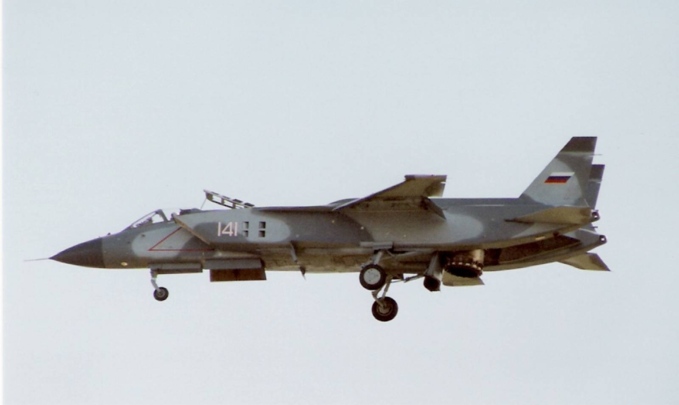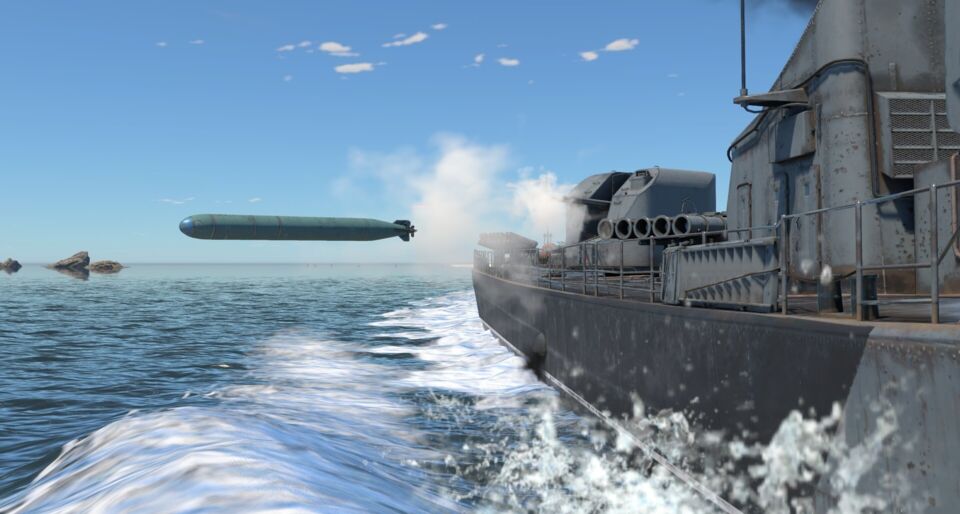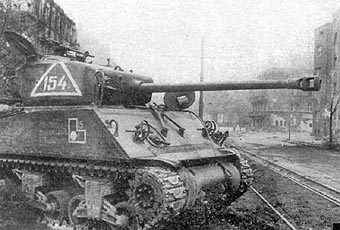#ussr
In the early history of tanks, engineers would often use layouts with multiple cannons to improve the total firepower. But the recent War Thunder addition stands out even among those designs since it has no less than three barrels side by side! We’re talking about a Soviet heavy tank destroyer, the KV-7.
Soon after World War 2, the Soviet Union created the T-54 tank. It was such a successful project and set such a high bar that the machine stayed in production for decades. Designing a better replacement turned out to be a hard task. Soviet engineers spent ages trying to make a radically new vehicle. One of those attempts was a tank known as the Object 140.
The Yakolev Yak-141 was a prototype Soviet VTOL supersonic fighter designed as a successor to the Yak-38. While the subsonic “Forger” with limited payload and poor handling was more of a proof of concept than a serious combat aircraft for its time, the heavily evolved Yak-141 was a far more capable one. It was a much larger aircraft with refined aerodynamics and a monstrously powerful Tumansky R-79 turbofan primary engine. With modern avionics and long-range missiles at its disposal, the Yak-141 was poised to be a world-leading supersonic VTOL fighter and a strong asset for the Soviet Navy — however, the collapse and political issues of the USSR prevented the Yak-141 from entering serial production and operational service in real combat situations and operations.
The SET-40 (Russian: "СЭТ-40") is a Soviet 400 mm torpedo for primary use against submarines. The designation "СЭТ" stands for "Самонаводящаяся Электрическая Торпеда" (Guided Electrical Torpedo) and 40 stands for the diameter. It is an early Cold War-era ASW (anti-submarine warfare) torpedo of Soviet origin used by a few corvettes and frigates. An improvement over the previous MGT-1 passive homing torpedo and a needed weapon due to the Soviet Navy's need for a torpedo with small dimensions that could be mounted on submarines as well as small ships and boats that could not carry the larger and many times heavier 533 mm calibre weapons. But in the game, ships do not have to fight with submarines, but with enemy torpedo boats, sea hunters and larger ships — quite. Read more about the torpedo — in the article.
The battles of WW2 made dozens of combat vehicles into legends. Tankers achieved insane feats on their Shermans, T-34s and Panthers, while the skies were set ablaze by mighty Mustangs and Spitfires. But one iconic vehicle of that era is standing out even in this extraordinary company. We’re talking, of course, about the Il-2 Shturmovik, the most-produced military aircraft in history.
The T-34 was and remains a legend. Thousands of these tanks were instrumental in defending the Soviet Union from the German invasion and became famous worldwide thanks to their exceptional capabilities. Today we’re going to tell you how to unlock the true potential of the T-34 and bring your team to victory.
When somebody says “wheeled tanks”, the first vehicles most people think of are probably the Italian Centauro or the South-African Rooikat, both of which are pretty recent designs. In reality though, the first vehicles of this type appeared as early as the first half of the 20th century. John Walter Christie, a talented American engineer, came forward with the idea for a design that made them possible, and the Soviet military were daredevil enough to roll with it. And so, in the interwar period, the Red Army received their first highly mobile “convertible” tanks with a unique wheels-and-tracks system. They were known as BT tanks, with “BT” standing for “Bystra-khodnyy Tank”, or “high-speed tank”.
Even today, people are still arguing about the legacy of Alexander Sergeevich Yakovlev. Some praise him as an engineering genius, while others say that he was more of a ruthless ladder climber. Despite all that, one thing remains clear: there aren’t that many aircraft engineers that started their career with plywood biplanes… and retired with a legacy of jet fighters and jet airliners. Not many indeed.
Among the T-34s used by the Soviet Army as they marched towards Germany, there ought to be a number of M4A2 Shermans within the inventory. A sign of cooperation between the distant Allies, the M4A2 Sherman was provided to the Soviet Union as part of the Lend-Lease program that led America and Britain to supply critical material and equipment to the Soviets. The M4A2 Sherman helped set-up several significant units for the Soviet Union to use in the Great Patriotic War to fight both the Germans and Japanese to the war's conclusion.


